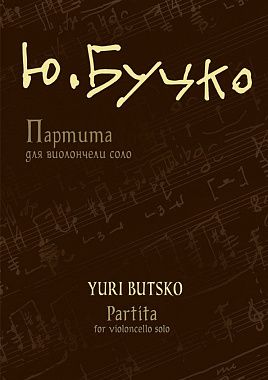Yuri Butsko’s (1938–2015) cello works comprise a rich and important part of the composer’s vast heritage. One could say that the cello was one of his favourite instruments throughout his life, and the author was really lucky with the performers — to name but a few of the amazing musicians who performed the premieres of Butsko’s cello works: Mikhail Khomitser, Viktor Simon, Denis Shapovalov.
Butsko’s cello performs in a number of different guises and genres, mainly used in conjunction with the orchestra. Notably, in the First (1968) and Second (“Richercar”; 1979) cello concertos, as well as in Adagio for cello and string orchestra (1996). A more recent example can be found in a duo with the second solo instrument in two Concert Symphonies, which can also be called “double concertos” (“Transfiguration”; 2001 and “The Silence of Autumn”; 2008–2009). Not to mention the composer’s seven string quartets and four piano trios, in which the cello has a very significant dramatic role.
Only one piece by Butsko was written for cello without accompaniment: the Partita (1966). While it is only being published now, it is a very early opus. However, it hasn’t lost its expressiveness many years later despite the time which has passed. In style, the Partita is close to other works of that era, in particular the First Cello Concerto. After the premiere, some critics wrote about the acute psychological nature of the music, and others propagated the idea about how it was ‘’totally’’ penetrated by thematic development. The whole composition is built as a germination of intonation cells given at the beginning. The three parts of the Partita are like a wave slowly gaining strength in the Prelude, rising high at the end of the Fugue, and gradually descending into the Postlude.
Нотное издание
Нотный редактор И. Кононов
Технический редактор Е. Воронова
Издательский номер 12197
ISMN 979-0-706450-14-8



